DeskTime
We increased customer retention and trial-to-paid ratio for an automated productivity tool.
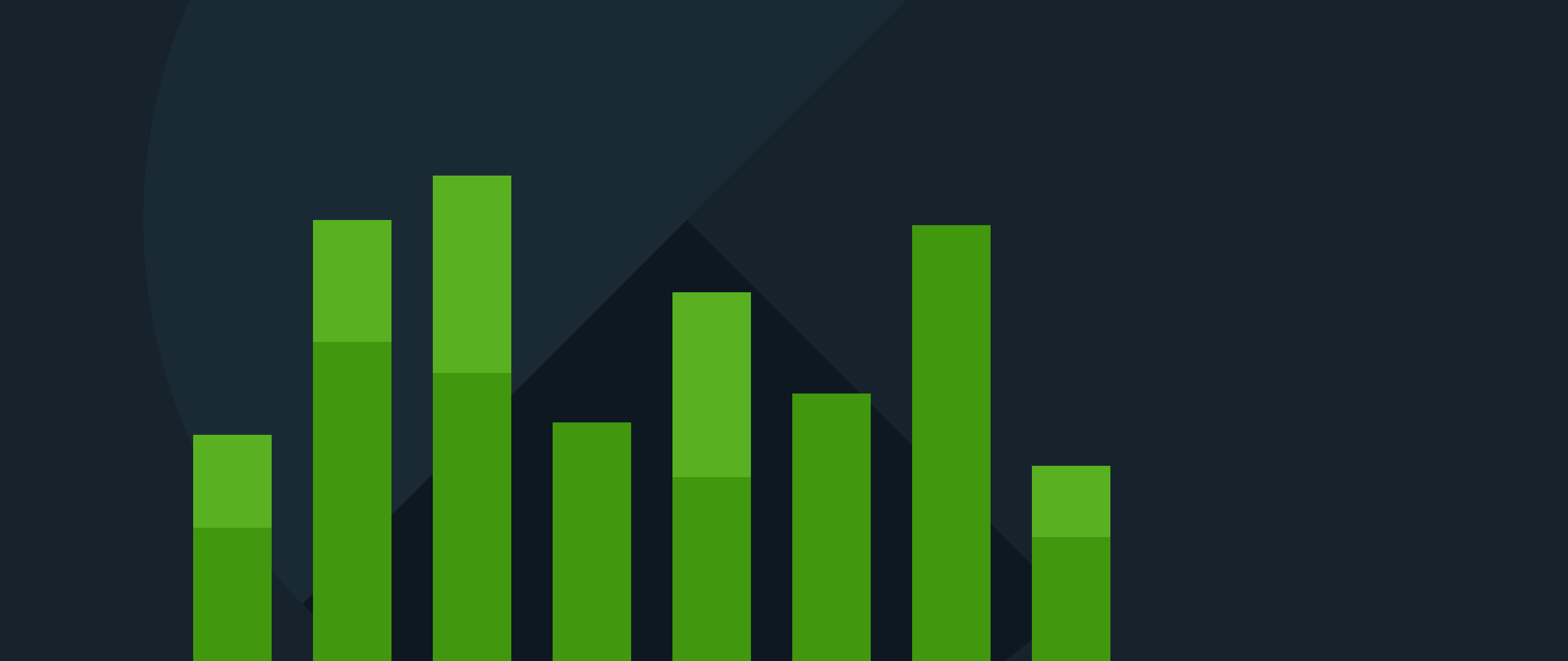
DeskTime needed to raise their paid to trial customer ratio. We quickly realized that this task required detailed information from the end users. DeskTime’s mobile app was lacking a crucial feature - time tracking. Our job was to seamlessly incorporate it in the mobile app design and functionality.
We started work by first analyzing their customer data and conducting user interviews to understand why their paid customers decided to subscribe and why inactive customers didn’t. After receiving very valuable intel from the users and conducting competitor analysis, we were ready to start building an onboarding flow, updating the marketing page and improving their mobile app’s functionality.
We were able to increase the trial to paid ratio and conversion rate on DeskTime’s homepage. Additionally, implementing the onboarding flow, resulted in a major increase in tracked time, which directly correlates with paid customer ratio.
Elina and Mārtiņš are open minded, easy to work with and they stay focussed on business goals. They test with real users and always share their input. We've adopted their data driven approach in our decision making process.

Toms Blodnieks
Product owner @ DeskTime
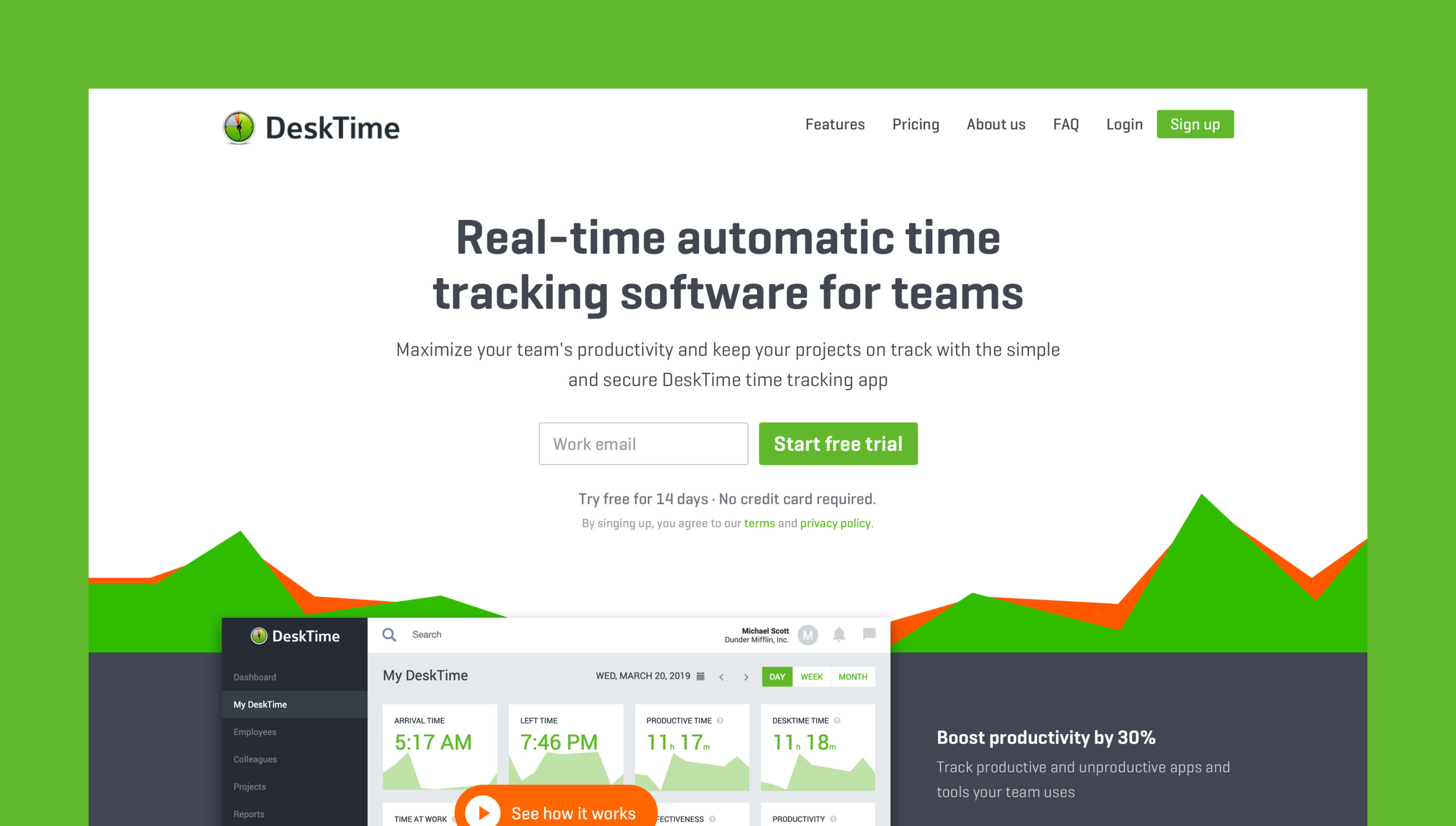
Let’s look at DeskTime’s home page. We had a few ideas for conversion optimization when it came to the first page. We ran an A/B test to see which version of the page performed better. Turns out, the updated page outperformed the old one. We increased home page conversions by 10% and reduced the bounce rate by 31.67%.
Every page has a goal
We had the opportunity to update a few of DeskTime’s product pages. We focused on increasing each page’s goal completion rate.
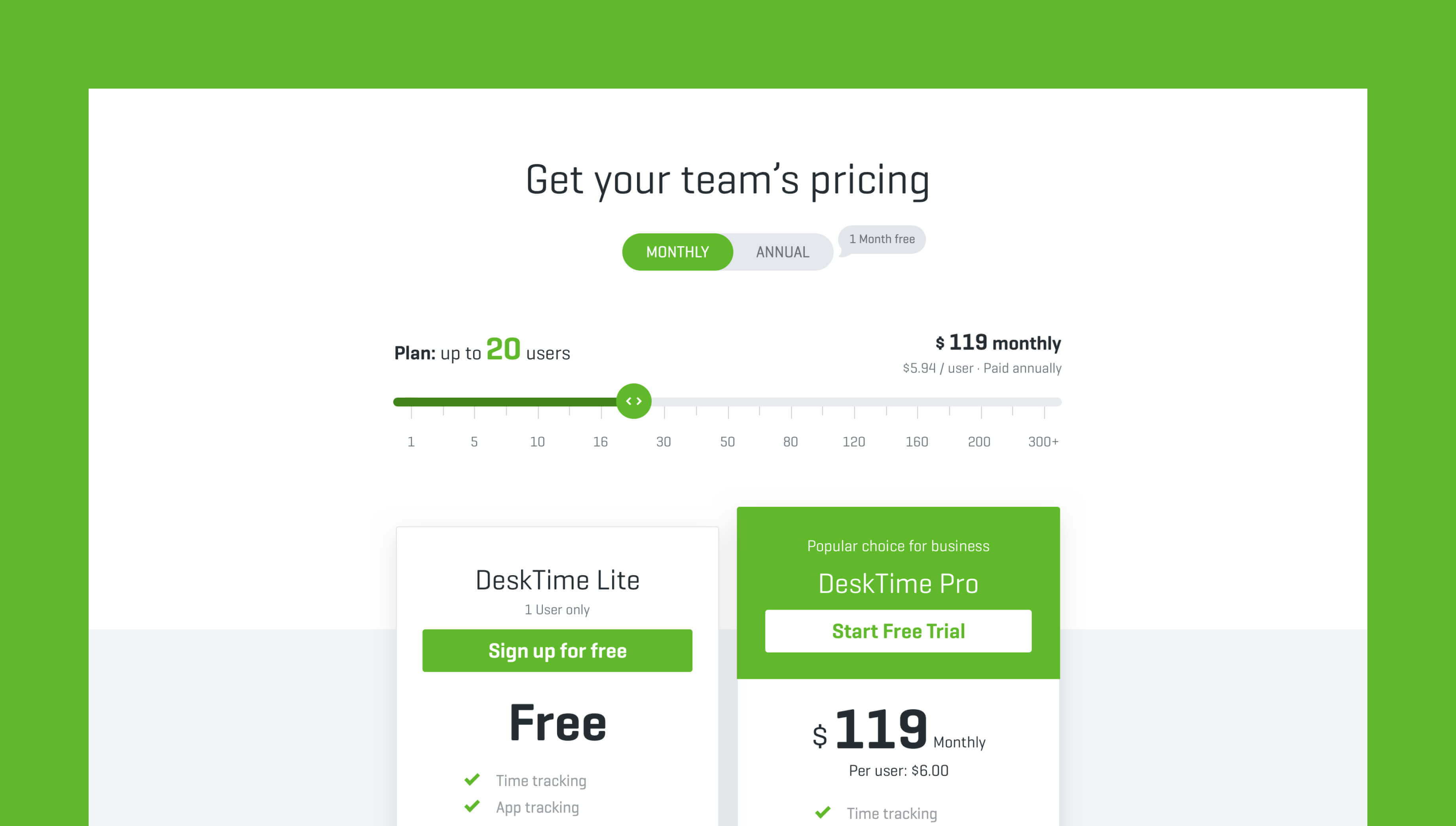
While analyzing session recordings for DeskTime’s old pricing page, we quickly realized that people use the slider but immediately scroll down to see the price. What’s the solution? Show them the price above the fold right next to the slider.
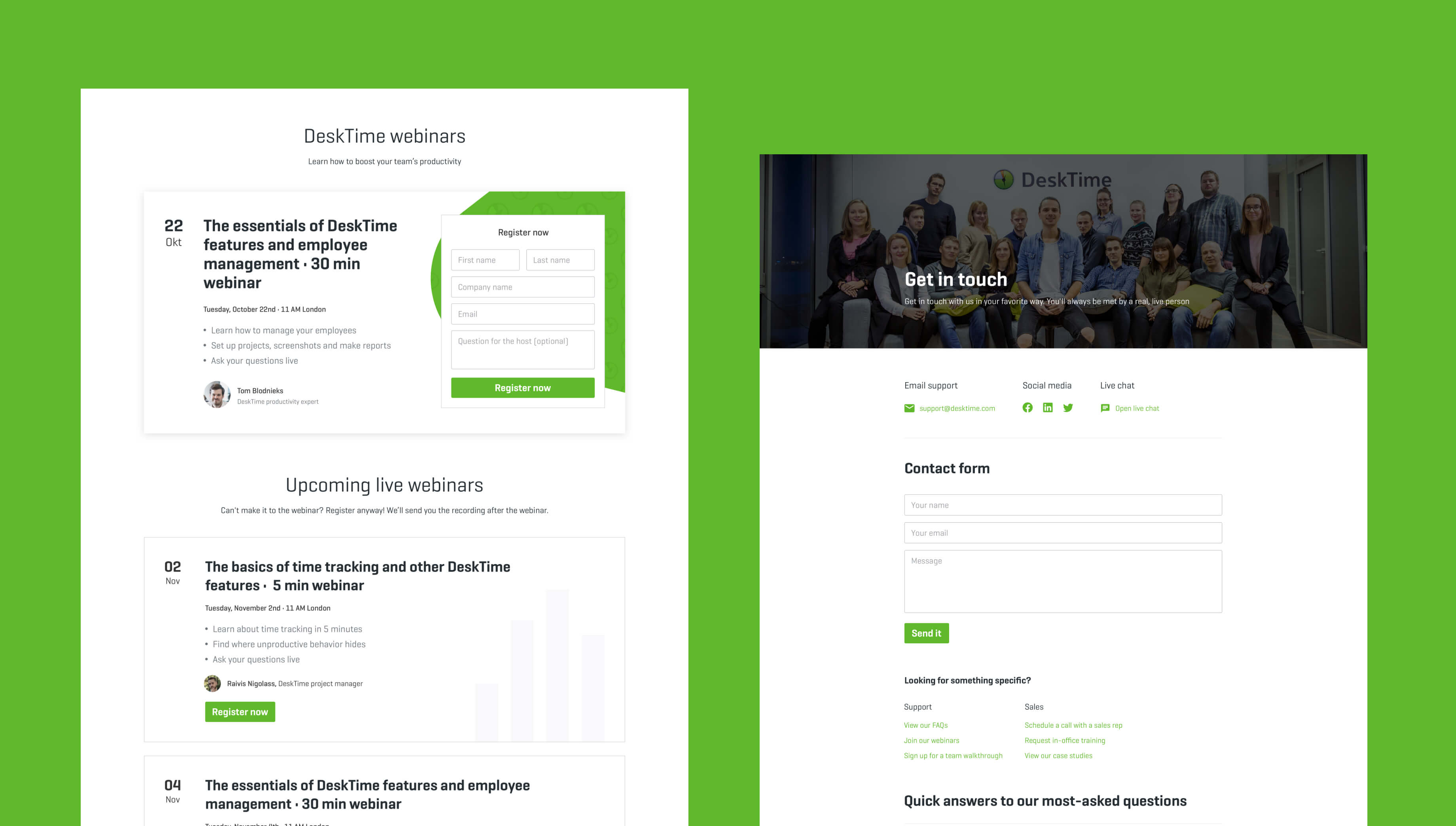
With every page we create, we want people to take action. For DeskTime’s webinar page it meant increasing webinar sign-ups. For their contact page - getting in touch.
Onboard your customers
Prior to working with us, Desktime’s customers landed on the admin panel right after registration. We introduced an onboarding flow to get customers more interested in the product features, tailor their experience and ultimately, be more invested. The theory is that users who complete onboarding stick around. B2B users are more interested in products. They have higher level of intent, so onboarding for them can be longer.
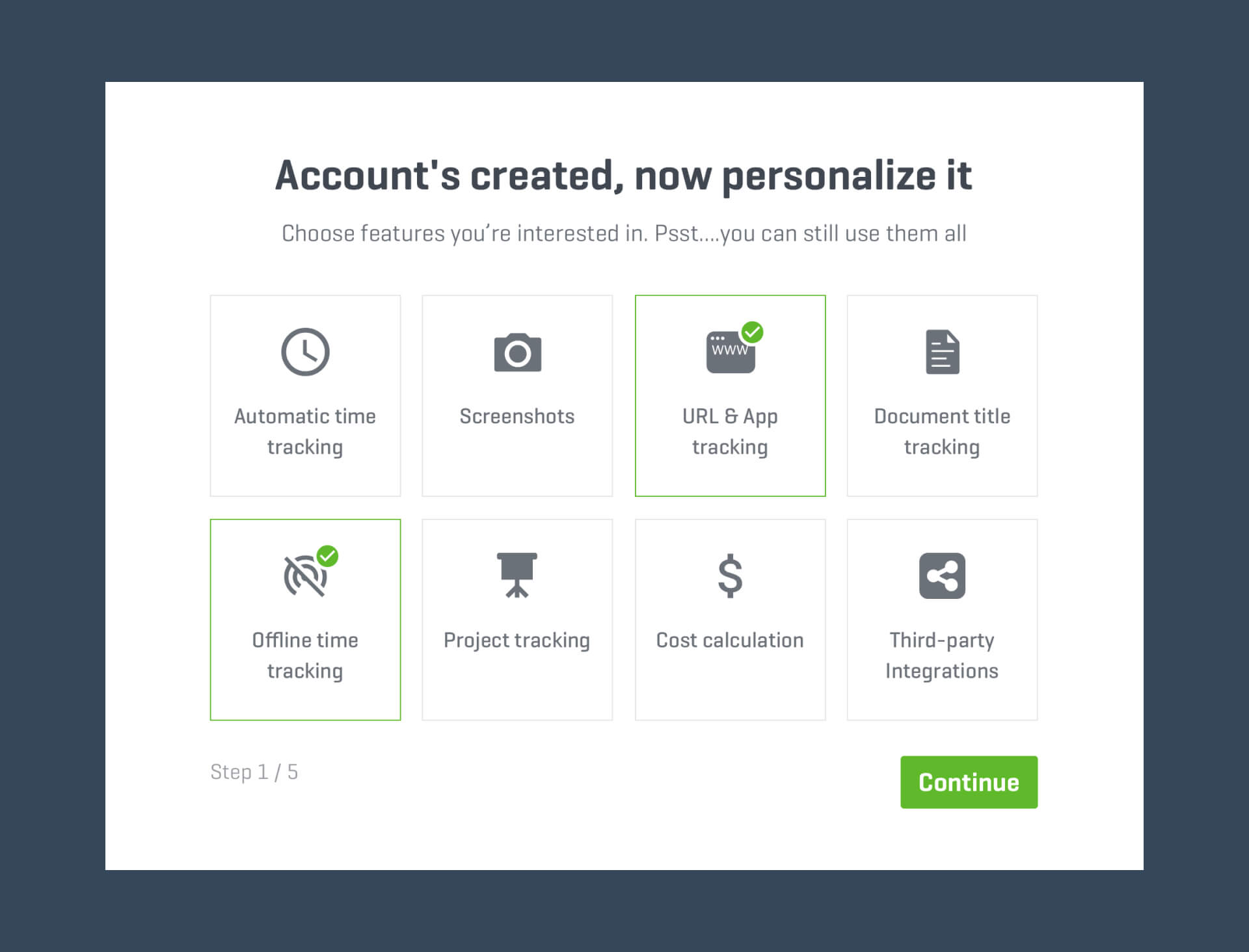
We gave users control over customization of the product. Creating their own experience, increased Desktime's value in their eyes - it's called the "IKEA effect".
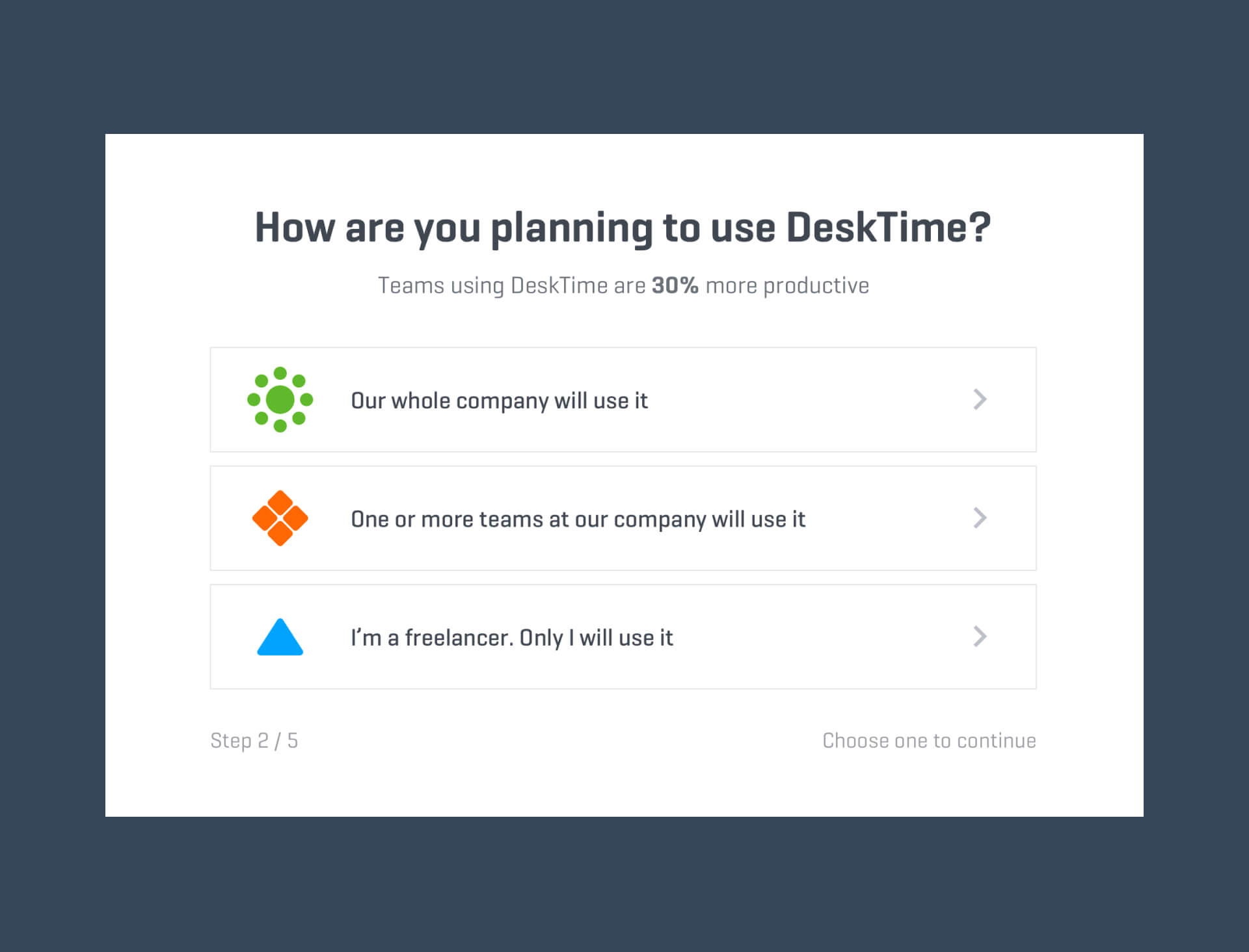
Onboarding should include segmentation to understand which customer is large, which is small. For large companies onboarding is different. Bigger companies = bigger profit. We always keep in mind business goals when designing.
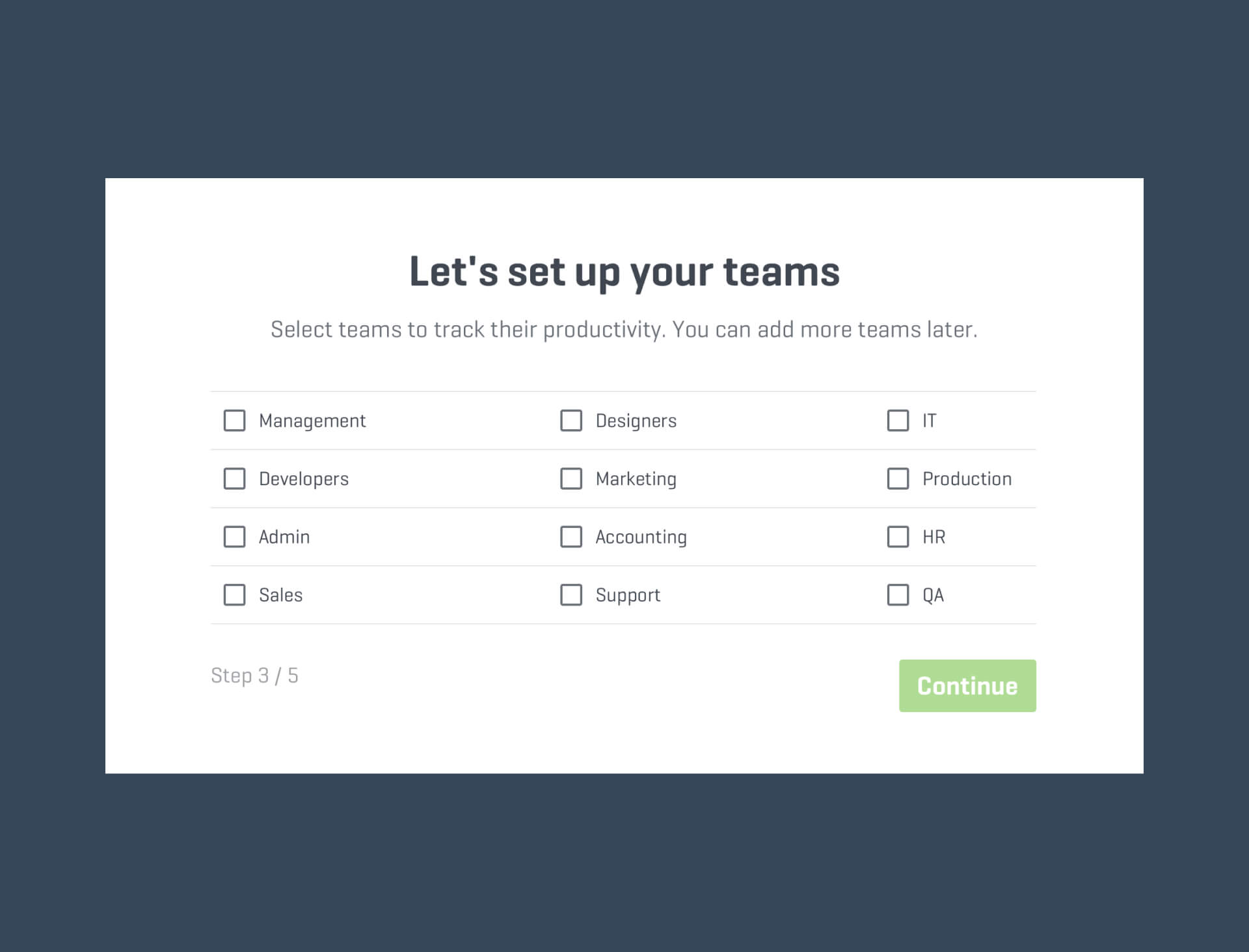
Making sure users don't see a blank page after completing onboarding is important. We added this step to push users to add other teams, thus creating a more in-depth company profile.
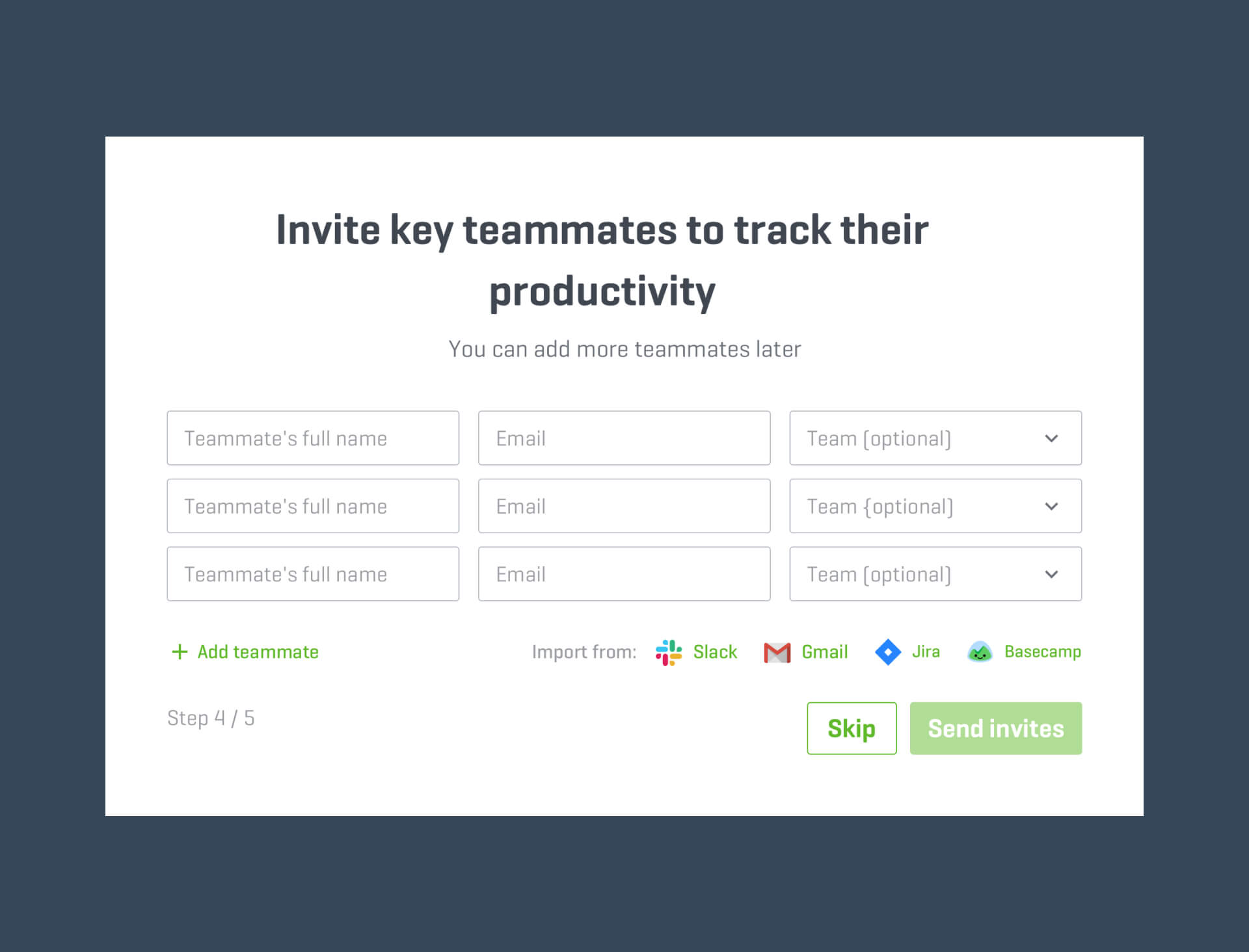
In Desktime's experience, companies who added teammates, were more likely to become paid customers. We made it easy for them - invite a member one by one or import in bulk.
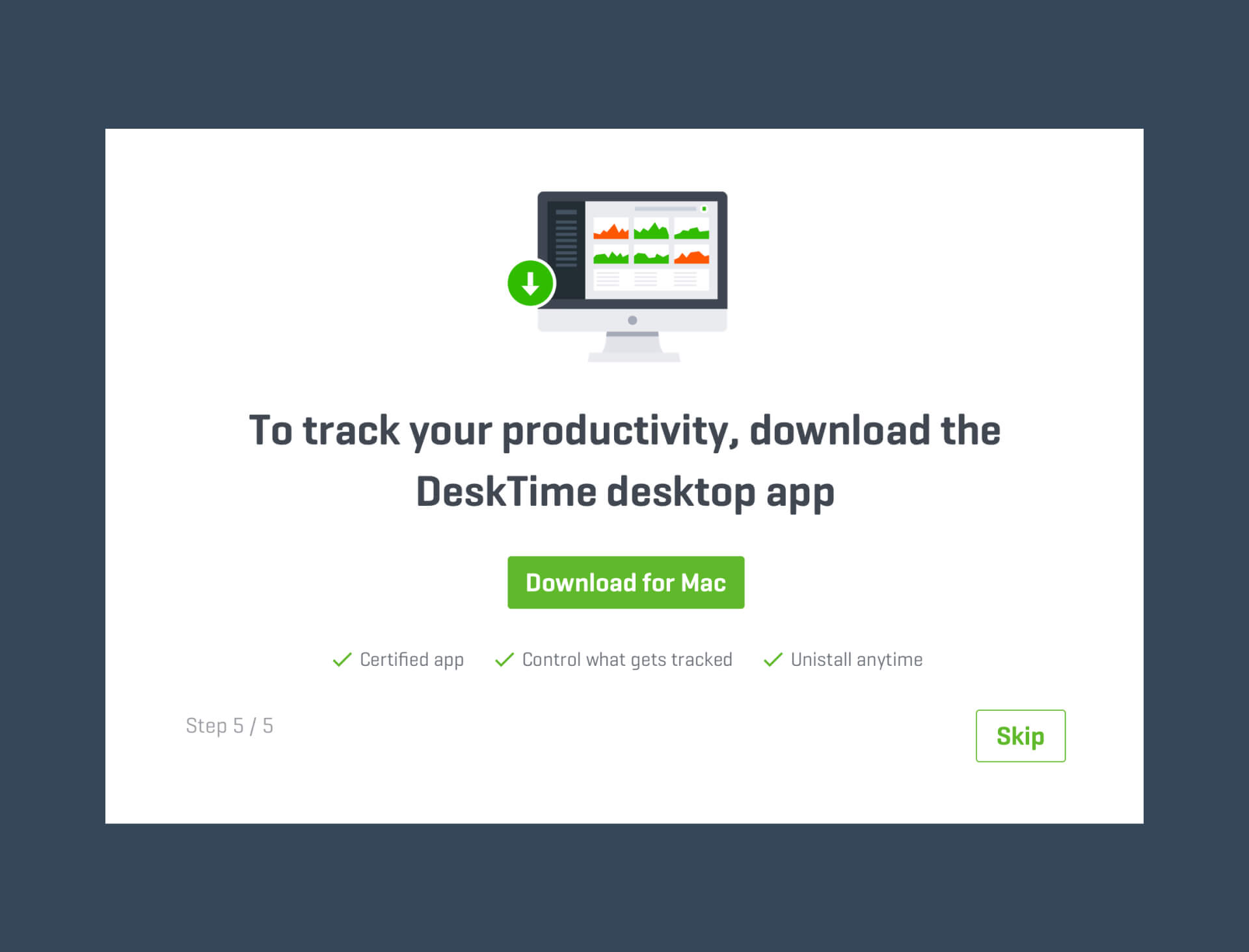
At first, this step was not a part of our onboarding plan. After analyzing the data, we realized that getting users to download Desktime's app and tracking their time, directly correlated with added payment methods. This step alone increased tracked time by 43%.
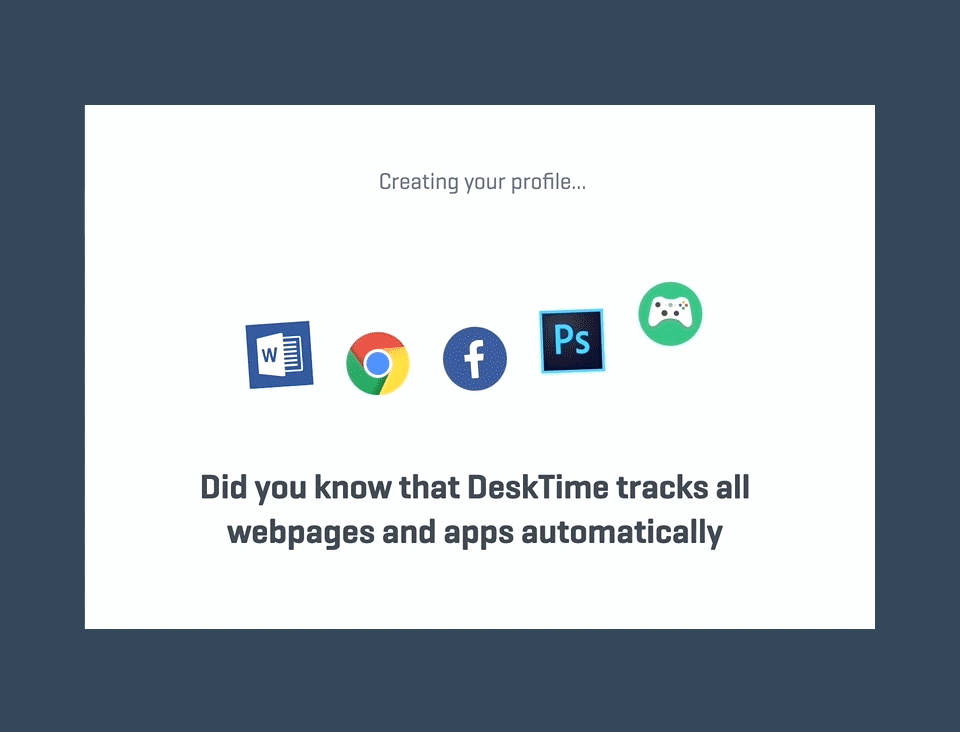
You can't ask users to invest time into your onboarding flow and then not take it seriously. By adding this final step, we reassured the customers that their input is being processed, resulting in a tailored admin experience. It might seem like an extra step, but it increases perceived product value to them.
Track on the go
From talking with support, we noticed that some of DeskTime’s customers are complaining about not being able to track their productivity while working remotely without a laptop. Our solution - update the mobile app functionality by adding a new feature. Now users can track their time from the app.
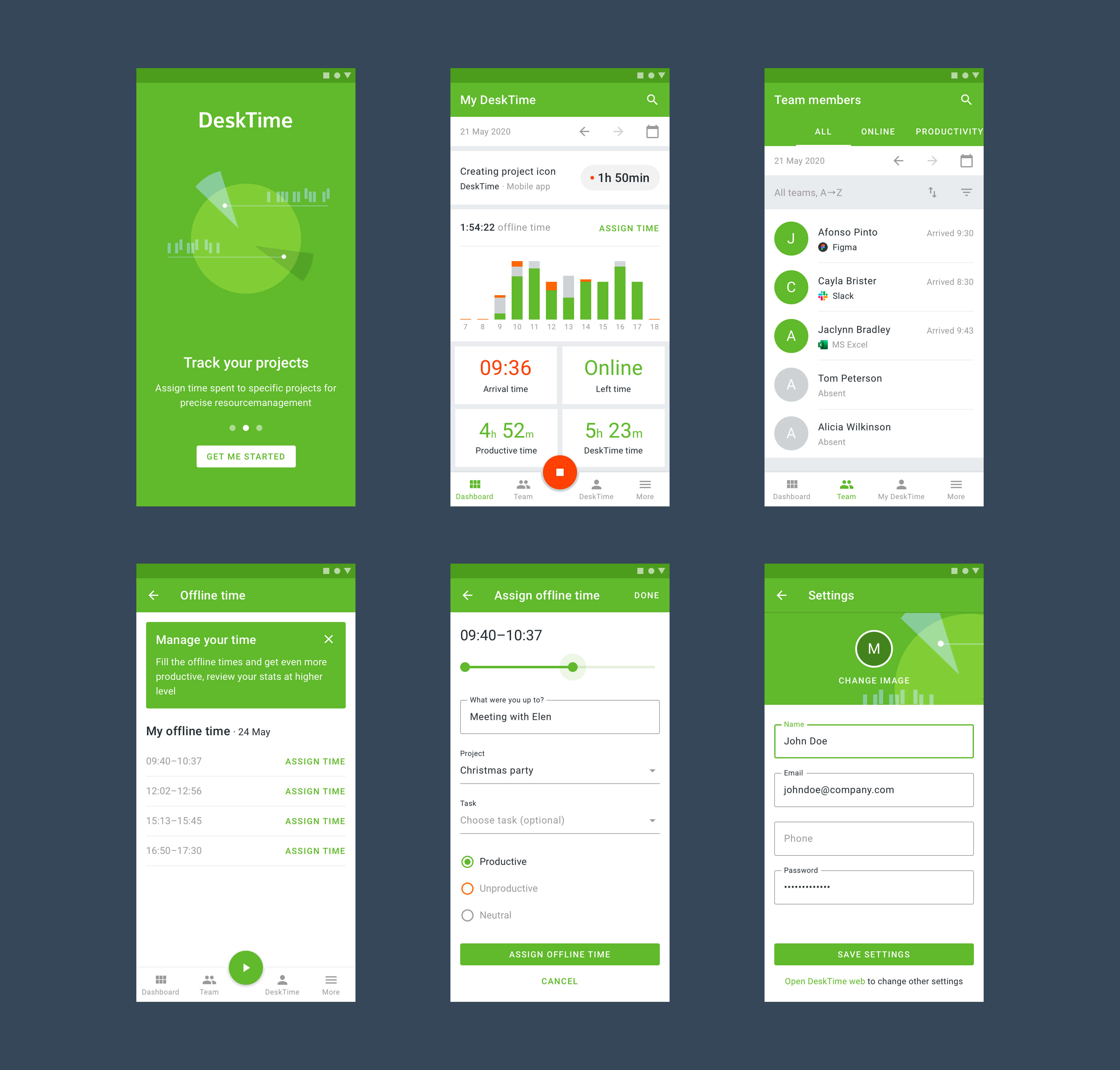
DeskTime’s app lacked an important feature and their app store reviews needed evaluating. We took it upon ourselves to update the overall app functionality and introduced a time tracking feature.
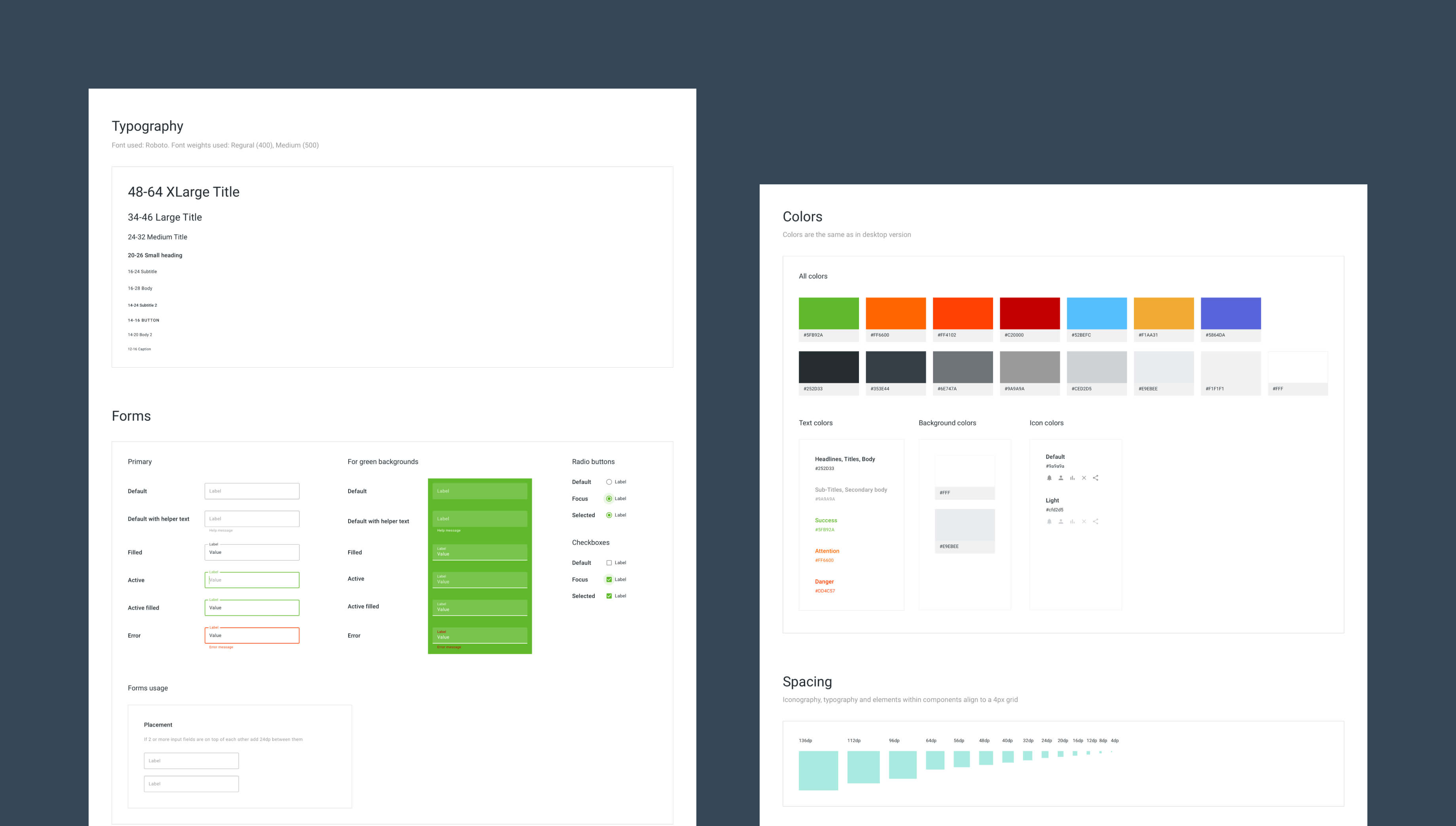
Successful companies are the ones that have invested a lot of time in infrastructure which means they don’t have to reinvent everything, everyday – they get to problem fixing right away. That’s why we introduced a mobile app design system for DeskTime. Teams who use design systems complete their objectives 34% faster than without one.